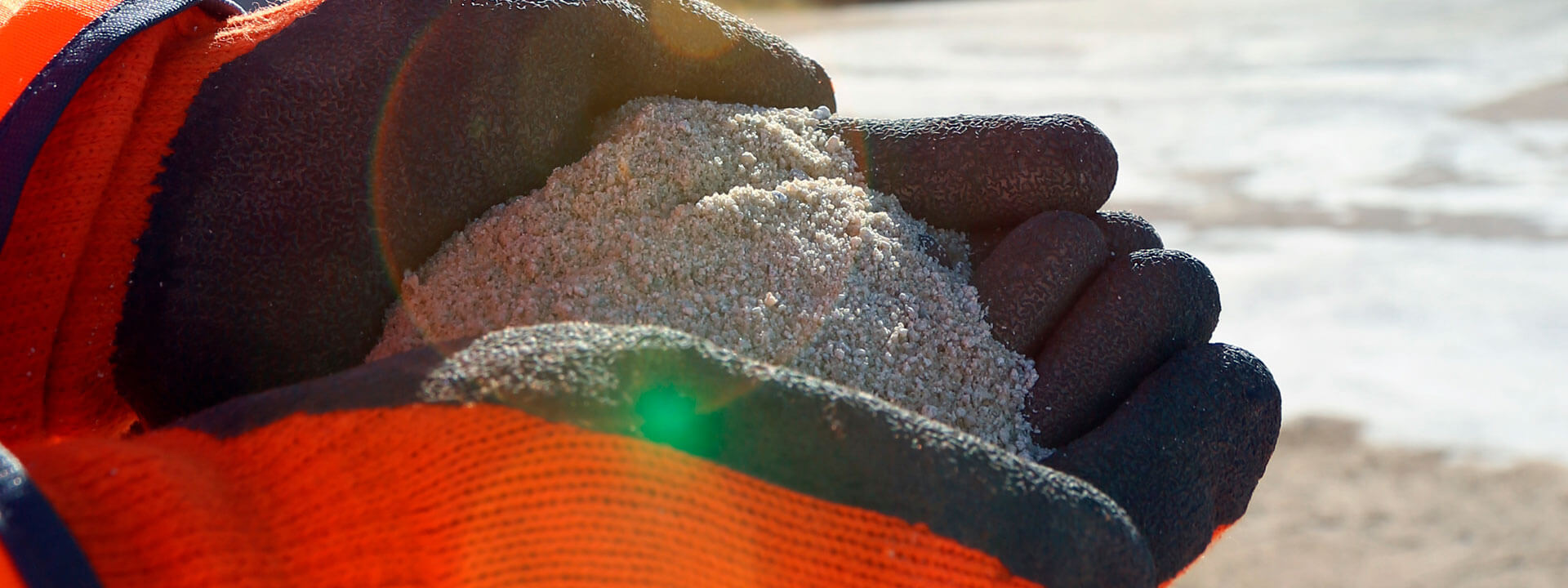Concrete constituents
The basic constituents of concrete are cement, water and aggregate.
Other constituents such as admixtures, pigments, fibres, polymers and reinforcement, can be incorporated to modify the properties of the plastic or hardened concrete. The properties of the plastic and hardened concrete are determined by the combination of constituents used. Concrete Mix Design is the name for the procedure for choosing a particular combination of constituents.
Aggregates
In concrete the major constituent in terms of volume is Aggregate. In essence concrete is like an artificial rock, consisting of aggregate materials bound together by hydrated cement.
Aggregate is very important for many concrete properties, including; workability; shrinkage; thermal expansion; compressive and tensile strength. Aggregate is conventionally subdivided into two sizes, coarse and fine.
Cement and additions
Safety Note – Most cements when mixed with water are highly alkaline and can produce alkali burns to unprotected skin. Avoid skin contact with fresh wet concrete.
Cement when mixed with water will form a paste that hardens into a strong rigid material. It is this paste that fills the voids between aggregate particles and binds them all together to form concrete. This hardening process (which occurs by a chemical reaction with water) is known as hydration.
When water is added to cement, hydration products grow outwards around a cement particle as it takes up water. This zone of expanding hydration products will intersect and bind with those from other cement particles and firmly encase aggregate particles thus ‘binding’ the concrete together.
Cement will hydrate under water. If there is an inadequate amount of water available hydration will stop and the concrete may be of poor quality. The process of keeping water in concrete to facilitate full hydration is known as curing.
Until recently, the term ´cement´ was an abbreviation for Portland Cement. However, its meaning has now expanded to cover a greatly increased product range, in which Portland Cement is combined with other constituents such as fly ash, also known as pulverised fuel ash (pfa) and ground granulated blast furnace slag (GGBS).
Pozzolans are natural or industrially produced materials that react with the lime released from the hydration of Portland Cement. Natural pozzollans occur in mainland Europe and other parts of the world and have been used in concrete since Roman times. Industrial pozzolans are normally the by-products of other processes and materials of this type include pulverised fuel ash, ground, granulated blast furnace slag, microsilica and metakaolin. They are widely used in the United Kingdom and elsewhere to improve the properties of concrete, usually by eliminating free lime and converting it into stable cementitious products.
Water
Water is needed in concrete for two reasons, firstly to hydrate the cement and secondly to provide mobility when the concrete is in its fluid state (workability). Generally the amount of water needed for mobility purposes is greater than that required for hydration only. The water used should be clean, i.e. of drinking water quality.
Many properties of concrete are affected by the water content, and more particularly the water/cement ratio.
Admixtures
Admixtures are materials, mainly liquids, that are added, to the concrete at the batching stage, and modify the properties of the plastic or hardened concrete. They are usually added in small concentrations. There are a number of different types of admixtures, i.e., water reducing, plasticising, air entrainment, retarders, accelerators, shrinkage compensation, gas generation, water-proofing.
Fibres
Various types of fibre can be added to concrete during mixing to modify the plastic and/or hardened concrete properties. The changes to the concrete properties will depend on the fibre material, fibre shape and dosage concentration.
Common types of fibres are polypropylene, alkali resistant glass and steel.

